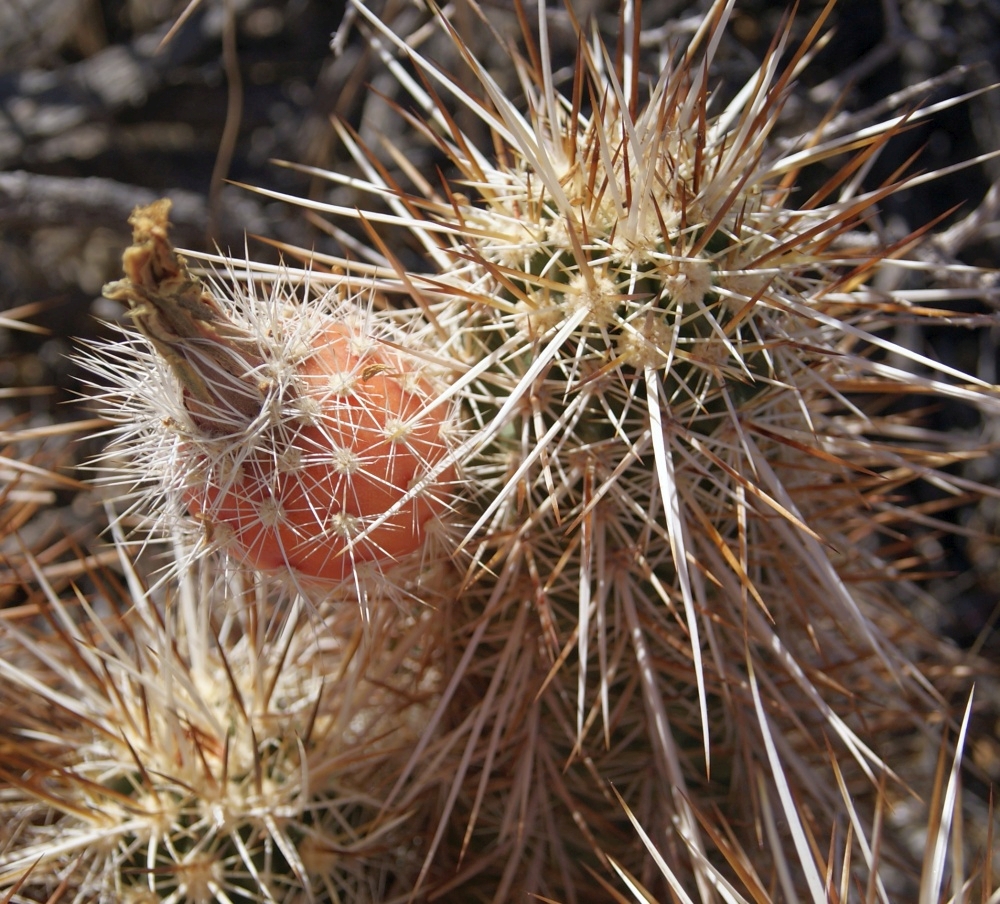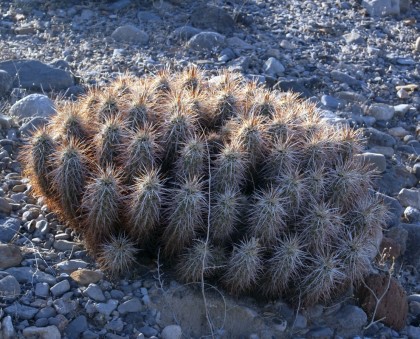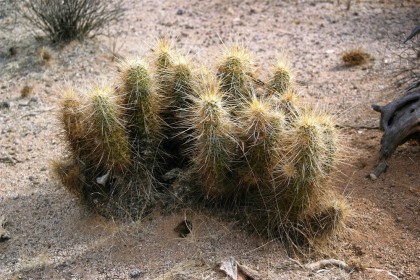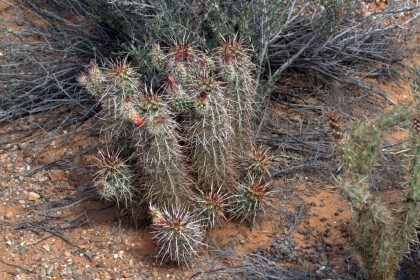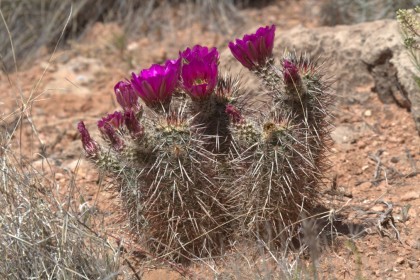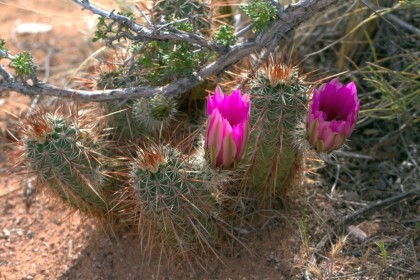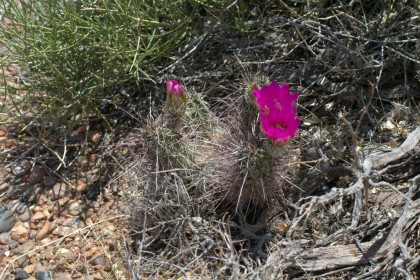(Photograph = Echinocereus engelmannii with ripe fruit)
Introduction
Echinocereus engelmannii is a wonderfully spiny and widespread species in the Southwest. It is often hidden by its spines, but can be seen from far away when in bloom. It has brilliant magenta or purple flowers.
The Details
Echinocereus engelmannii occurs AZ, UT, NV, and CA. It also occurs in Mexico adjacent to those states and in Baja California. Overall, E. engelmannii occurs in least three deserts: Mojave Desert, Sonoran Desert, and Colorado Desert.
E. engelmannii grows on alluvial fans, rocky mountain slopes, and rocky hills. It can also be found in desert valleys where the soil is finer. It occurs in piñon and juniper locations, grasslands, desert scrublands, and other habitats. A prerequisite is fast drainage, but it does not grow on steep slopes. Because it grows from low elevations to over 6,000 ft, forms of the species can be very hardy.
The fruit is dull- or bright red and can even be greenish brown. The fruit is heavily spiny and eagerly eaten by small mammals and birds. Young plants grow as a single stem or two, but old plants have many dozens of stems. Spine colors are various depending upon the specific plant or variety; spines are straw colored, white, brown, black, black-purple, or even reddish. Multiple varieties and forms of the species have been proposed, but some have not accepted division of the species into varieties. Depending upon location, plants my be just a few inches tall or up to 18-tall.
Related Reading: Echinocereus Online Journal
